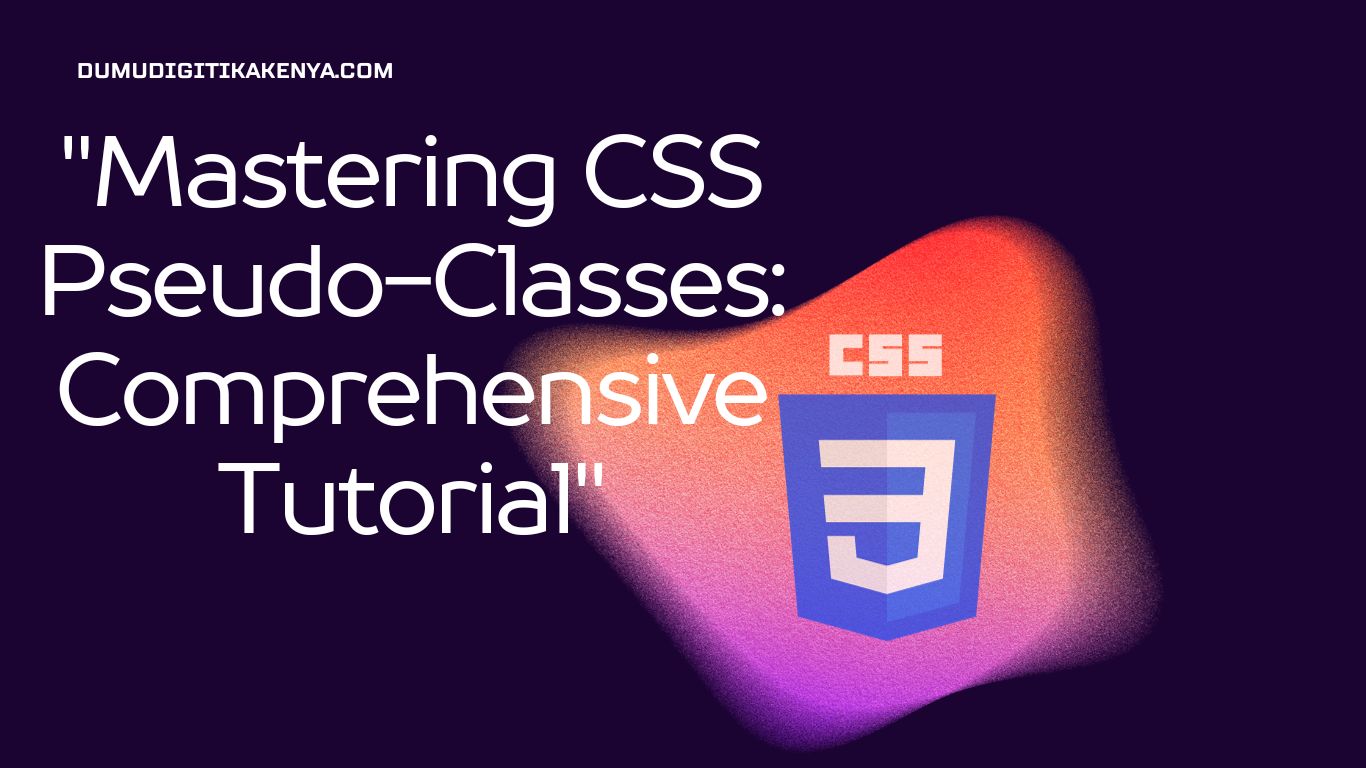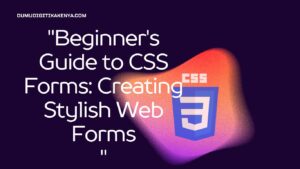Mastering CSS Pseudo-Classes: A Comprehensive Tutorial
Welcome to our comprehensive guide on CSS Pseudo-Classes! In the ever-evolving landscape of web development, mastering CSS is paramount, and understanding pseudo-classes is a crucial step in achieving design excellence. These powerful tools allow you to dynamically style HTML elements based on various states and interactions, enhancing user experience and interactivity. In this article, we’ll delve deep into the world of CSS Pseudo-Classes, covering their syntax, common use cases, and providing practical examples to help you harness their potential. Whether you’re a seasoned developer looking to refine your CSS skills or a newcomer eager to learn the ropes, this guide will equip you with the knowledge you need to create visually stunning and responsive web pages. Let’s begin our journey into the world of CSS Pseudo-Classes and unlock the secrets of effective web styling!

Table of Contents
1. Introduction to Pseudo-Classes
Pseudo-classes are a vital part of CSS, allowing developers to apply styles to HTML elements based on their state or position within the document. They enhance the interactivity and aesthetics of web pages by responding to user actions, like hovering over a link or clicking a button.
2. Syntax of Pseudo-Classes
The syntax for using pseudo-classes involves selecting an HTML element followed by a colon and the pseudo-class name. For example:
selector:pseudo-class {
property: value;
}3. Common Pseudo-Classes
3.1 :hover
The :hover pseudo-class is used to style an element when a user hovers their mouse pointer over it. It is commonly used for links to provide visual feedback.
Example:
a:hover {
color: #FF5733; /* Changes text color on hover */
}3.2 :active
The :active pseudo-class is used to style an element when it is being clicked or activated. It’s often used for buttons.
Example:
button:active {
background-color: #4CAF50; /* Changes background color on click */
}3.3 :focus
The :focus pseudo-class is used to style an element when it gains focus, such as when a user clicks inside an input field.
Example:
input:focus {
border: 2px solid #007BFF; /* Adds a blue border when focused */
}3.4 :nth-child()
The :nth-child() pseudo-class allows you to select elements based on their position within a parent element. It’s versatile and can be used for various purposes.
Example:
li:nth-child(odd) {
background-color: #f2f2f2; /* Styles odd list items */
}4. Combining Pseudo-Classes
You can combine multiple pseudo-classes to create precise selections. For instance, you can style a link differently when it’s hovered and active:
a:hover:active {
color: #FF5733; /* Change color on hover and click */
}5. Custom Pseudo-Classes
Besides the common pseudo-classes, you can create custom pseudo-classes using CSS preprocessors like SASS or LESS. These allow you to define your own pseudo-classes with specific behaviors.
Example (SASS):
/* Define a custom pseudo-class */
@mixin custom-pseudo {
&:before {
content: "Custom Pseudo-Class";
color: #FF5733;
}
}
/* Use the custom pseudo-class */
button {
@include custom-pseudo;
}Conclusion
In conclusion, this comprehensive guide has shed light on the intricate world of CSS Pseudo-Classes, illuminating their significance in modern web development. Armed with the knowledge imparted in this article, you now have the power to transform static web pages into dynamic and interactive user experiences. By leveraging pseudo-classes such as :hover, :active, :focus, and :nth-child(), you can breathe life into your designs, responding to user actions with finesse.
As you continue on your web development journey, remember that understanding and utilizing CSS Pseudo-Classes is just one piece of the puzzle. Stay curious and never stop exploring the ever-evolving realm of web technologies. With creativity and practice, you can harness the full potential of CSS Pseudo-Classes to create web pages that captivate and engage users, setting you on a path to becoming a proficient and sought-after web developer.
In the fast-paced digital landscape, staying updated with the latest trends and techniques in CSS and web development is key. Keep experimenting, honing your skills, and pushing the boundaries of what is possible with CSS Pseudo-Classes. Your journey to becoming a web styling maestro has just begun, and the possibilities are limitless. Happy coding, and may your web designs always be captivating and user-centric!




